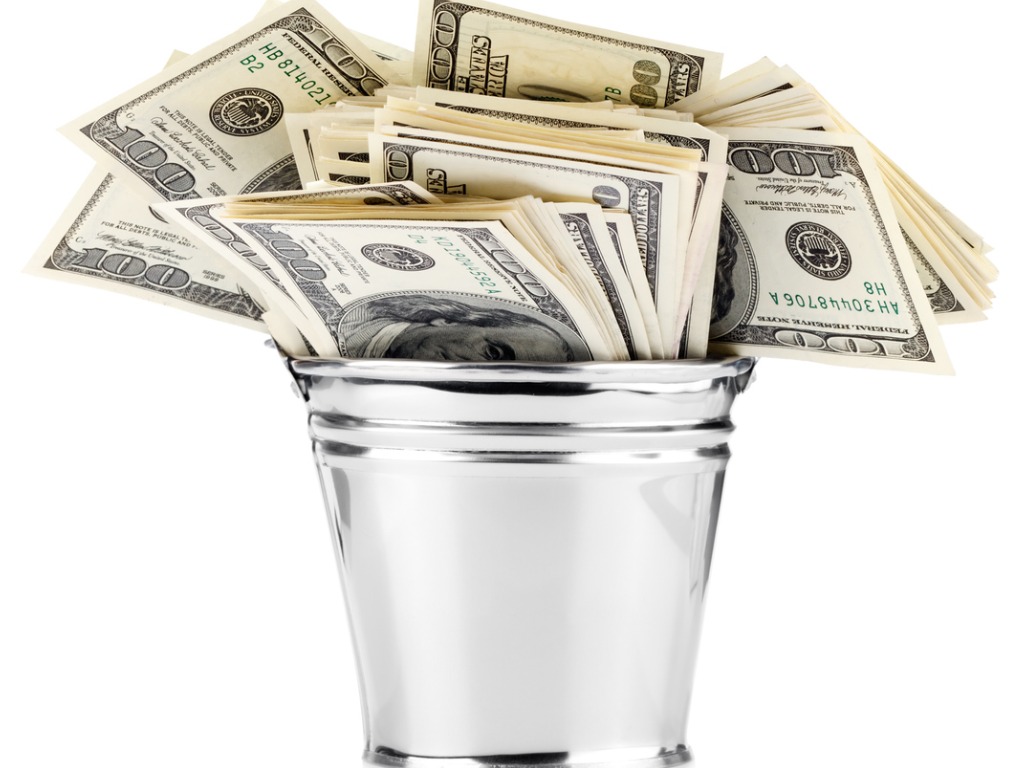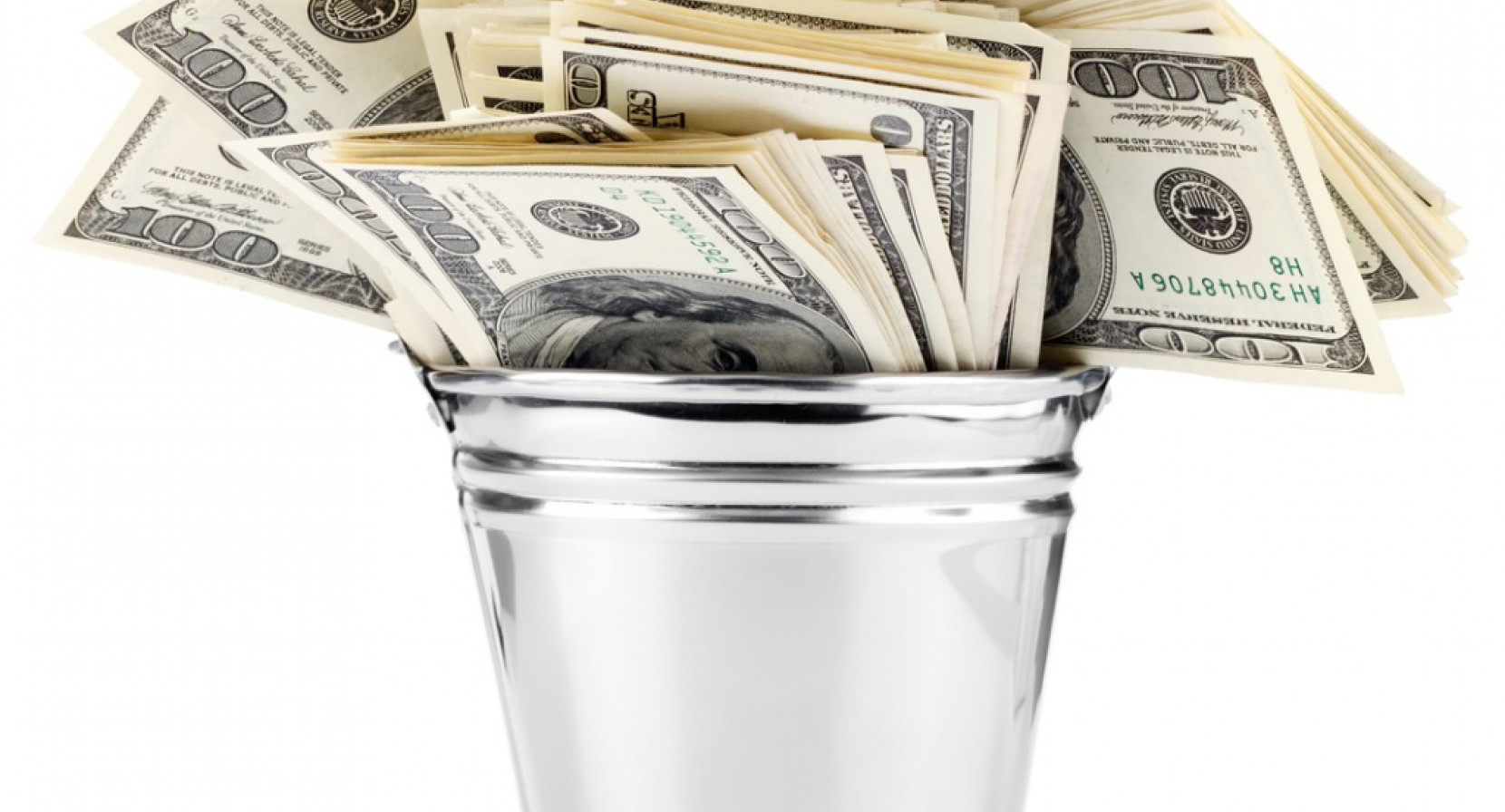The rapid stock market decline in early February serves as a stark reminder that downside moves can develop quickly. Long-term investors can ride out such volatility, of course — but what if you’re a retiree relying on regular investment withdrawals to fund current living expenses? A sharp downturn can be a fearful thing.
Indeed, as Bankrate financial analyst Greg McBride warned in a recent Marketwatch article, “Nothing kills a portfolio quicker than taking withdrawals in a declining market.”
To help retirees avoid having to take withdrawals from beaten-down investments, many financial advisors suggest adopting a “bucket approach” to retirement cash flow. The word “bucket” here is simply a metaphor used to describe segregating money according to its intended use. In this case, money for near-term spending goes into a “cash bucket,” while money for longer-term investments remains in an “investments bucket.” (Some advisors recommend three buckets: one for cash, one for intermediate-term bonds, and a third for stock-based investments.)
The cash bucket
The cash bucket could be called your “peace-of-mind” bucket. It’s where you stash money you’ll need to live on over the next two or three years. Your goal is to have enough set aside that you can be largely indifferent to market fluctuations and corrections (i.e., a drop of 10% from a previous high). A three-year cash bucket would enable you to ride out the worst of an average-length bear-market.
Of course, the more cash you set aside, the greater the “opportunity cost.” Money sitting in cash has meager earning potential. In addition, the longer you hold money in cash, the greater the danger that the purchasing power of that money will be eroded by inflation.
Because the most important objectives for your cash-bucket funds are liquidity and safety, not earnings, you’ll want to put this money into safe instruments such as a brokerage money-market fund, a bank money-market account, or short-term CDs. Another possibility, if you’re willing to take slightly more risk in exchange for a potentially higher yield, is a short-term bond fund. Keep in mind, however, that while short-term bond funds tend to outperform money-market rates, you can lose money in a short-term bond fund.
How much money?
If you’re already retired, you probably can come up with a fairly accurate figure for your annual living expenses. If you haven’t retired yet, you’ll need to do a cost-of-living projection before deciding how much to set aside in your cash bucket.
Fortunately, some expenses likely will go down after you retire. Your income-tax burden may fall, for instance, and (depending on your age and where you live) you may get a property-tax break too. Additionally, your transportation costs will decline if you’re no longer commuting, and you won’t need to set aside retirement savings anymore.
For purposes of illustration, let’s assume your annual cost-of-living in retirement is (or is projected to be) $60,000. From that amount, subtract the annual benefits you expect to receive from Social Security, along with any amount(s) expected from other guaranteed income sources, such as an annuity or pension.
If Social Security and other sources furnish you with, say, $35,000 a year, you’ll need $25,000 in cash-bucket money each year to fully fund your $60,000 annual cost of living. To fully fund a two-year cash bucket, therefore, you would need $50,000. A three-year bucket would require $75,000 — with perhaps some additional dollars added to account for inflation. (If you don’t already have an emergency fund set aside for unexpected expenses, you’d be wise to fill your cash bucket even more!)
From theory to practice
To begin, withdraw from your investments the amount you’ve determined to put in your cash bucket. Place those withdrawn funds in safe instruments (as described above), leaving the rest of your retirement funds in your investments bucket.
Once you have a strong reserve in savings, you should be able to relax about what the market may be doing. A downturn, a correction (decline of 10%), or even a full-blown bear market (a decline of 20% or more), will not affect your immediate cash flow because you’ll be drawing monthly from safe, liquid holdings.
In effect, your cash holdings will become the funding source for your monthly “paycheck,” along with Social Security income and any income you may have from other sources.
All this sounds simple in theory, but in practice, it’s likely to a bit more complicated. For one thing, implementing the bucket approach to retirement cash flow involves timing issues — namely, when do you first fill your cash bucket, and when do you refill it with more money from your longer-term investments? (Taxation issues may come into play as well.)
Ideally, you’ll begin the process during a period when the stock market has been performing well. (Now would be a good time.) After all, the goal of the bucket approach is to avoid withdrawing living-expense money during — or in the close aftermath of — a market drawdown.
As for replenishing your cash bucket, there is no one-size-fits-all system. Obviously, you’ll to want sell investments during a time when market performance has been strong, not weak. Having a cash reserve that’s supplying your near-term living expenses allows you to wait for an opportune time. When the market has been strong lately, fill the cash bucket by harvesting some of your recent investment gains.
During long bear markets, you’ll let your cash bucket gradually dwindle, spending from it without selling investments while their prices are down. As the market recovers, you can begin gradually refilling the cash bucket again. (See 3 Ways to Make Your Retirement Savings Last for an example of how a cash-bucket replenishment strategy might have been implemented over the past 15 years.) Your overall goal is simply to try to sell into market strength, not into declines.
As for what to sell, many financial advisors suggest looking first to rebalancing proceeds. As you rebalance — i.e., scaling back on holdings that have performed well to bring them back in line with your optimal asset allocation — move at least a portion of the “excess” money to your cash bucket, rather than pulling it from other investments. Another source of funds is to take fund distributions (capital gains and dividends) and move those to your cash bucket. If you have required minimum distributions (RMDs) from an IRA, you can use that money to help replenish your cash bucket.
No system is perfect. But a bucket approach can go a long way toward helping you maintain a relatively stable standard of living in retirement, while largely ignoring the shorter-term ebbs and flows of the market.









